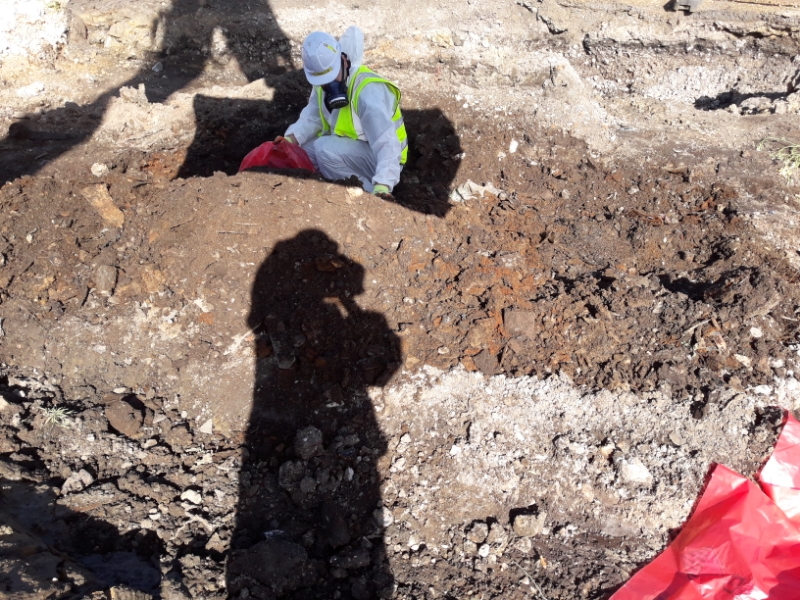What is Asbestos and what causes it?
Asbestos is the name for a group of natural occurring mineral fibres. Due to their strength and heat and chemical resistance asbestos was commonly used in the past in buildings as insulation and fire proofing. It was also used as a component in other building materials. There are three main types of asbestos:
- chrysotile (white asbestos)
- amosite (brown asbestos)
- crocidolite (blue asbestos)
Asbestos in soils can be fibres or larger pieces of solid material that contains asbestos such as piping, floor or roof tiles or insulation. Asbestos can also be found on building materials that have been sprayed with asbestos coating.
It is very common to find previous waste materials including asbestos, when working on brownfield sites. These materials were most likely left onsite from many years’ ago when guidelines were less stringent than they are now. Asbestos cement products can be found on previously demolished building sites, unlicensed landfill, in fly tipped waste and on-site burial of asbestos cement products. Consequently there are now many sites across the UK that have inherently been left with an asbestos problem.

asbestos in soil sampling & analysis
Soil sampling is the correct way to determine whether asbestos is present. Samples will be collected from key areas of the site and sent to a lab for professional analysis. This will provide quantitative and qualitative results, but it’s important to note that no matter what % of the soil contains asbestos it will require complete removal before any construction work can begin.

What does Asbestos in soil look like?
Often asbestos is not visible. This is why we always recommend a pre-purchase or pre-project survey to find out if there is asbestos present. Larger fragments of Asbestos can be clearly visible to the naked eye, however it’s not always obvious whether it is asbestos or another harmless building material. Fibres are almost invisible, and as such are most dangerous as they are small and hair like and easily breathed in.

How dangerous is Asbestos?
Asbestos is most harmful when the ground is disturbed, such as with construction as it releases the fibres that, when airborne can be breathed in causing risk of lung damage. Asbestos cement products can still pose a significant health problem if not handled correctly. This type of asbestos is bound in a matrix of materials, usually a mixture of chrysotile asbestos and cement. The asbestos fibres are mostly bound into the cement and are not readily made airborne, unless it has been badly damaged or recently broken up.
What is non-licensable asbsetos?
Non-licensed works carry a lower risk of exposure to fibres. Common non-licensed works include asbestos cement, floor tiles, textured decorative coating, encapsulation of good-condition Asbestos Containing Materials (ACM) and removing loose debris of asbestos.

How to get rid of Asbestos contaminated ground
Non-Licensable asbestos can where possible be removed by manually picking Asbestos Containing Materials (ACMs) from the soils to reduce the contamination of asbestos to non-hazardous levels. Once the larger pieces have been removed the ground can be excavated to removal all soils containing asbestos.
Best practices must be adhered to in accordance to Control of Asbestos Regulation 2012 (CAR 2012) and the Approved Code of Practice (ACOP).
Soils containing asbestos are deemed hazardous waste and are required to not only be removed from site by a suitable licensed contractor such as Environment Controls, but can only be taken to a landfill licensed to receive it. Control of access and decontamination zones, including plant and machinery must be thorough.
Want to know more about contaminated ground?
In this comprehensive guide we answer all the most asked questions about contaminated ground removal.


